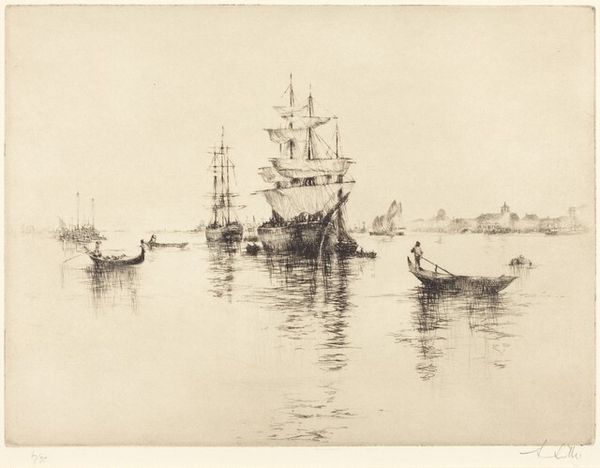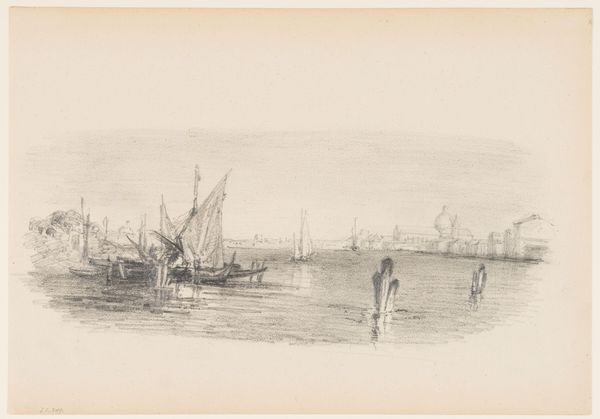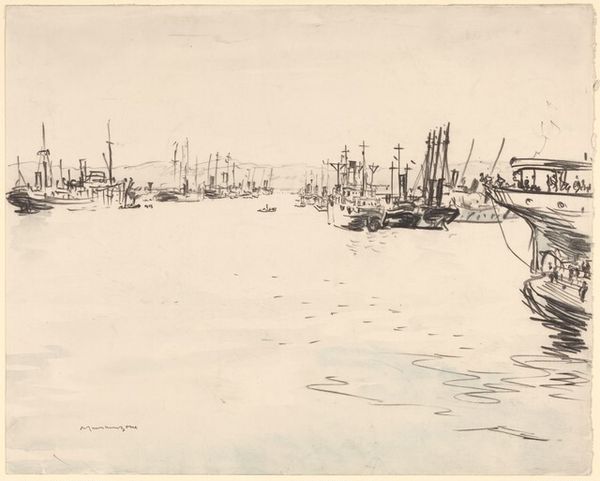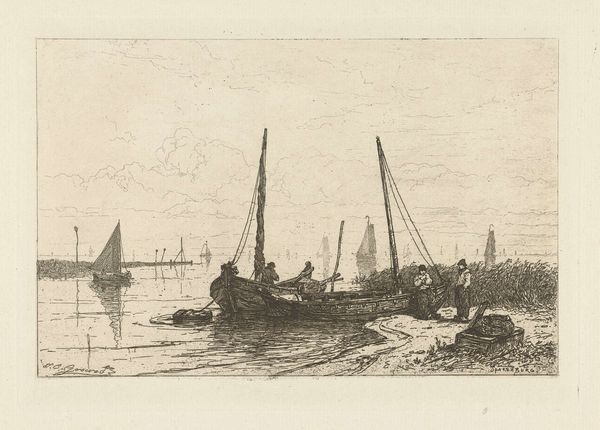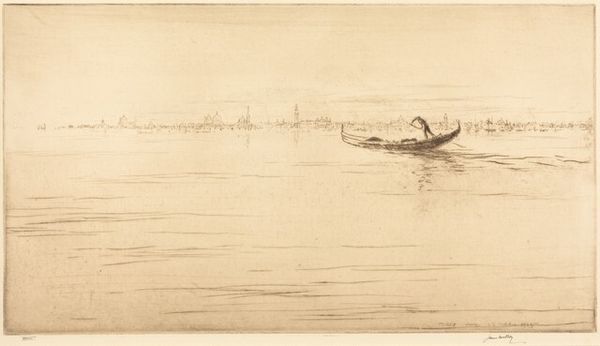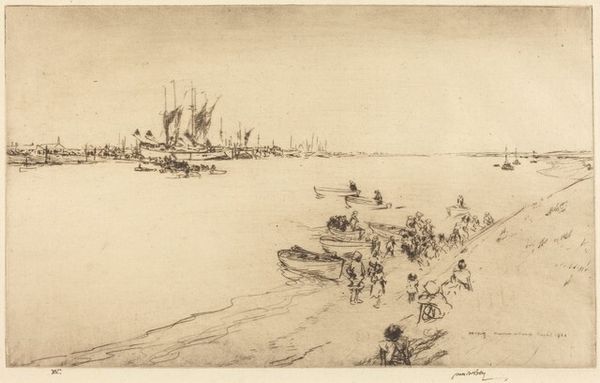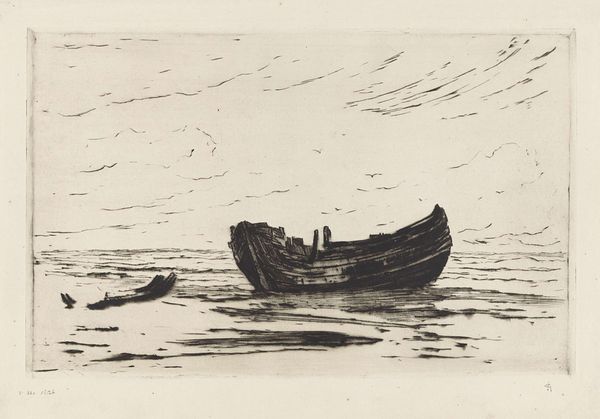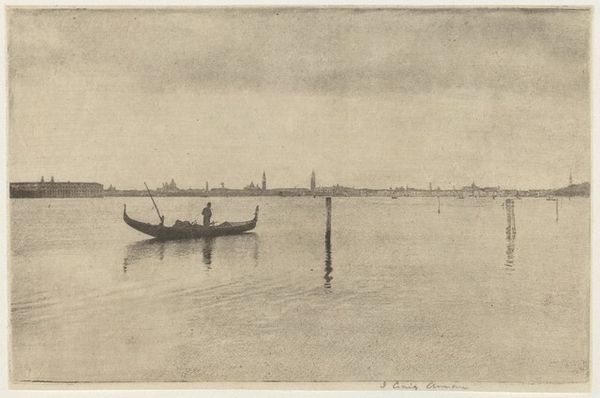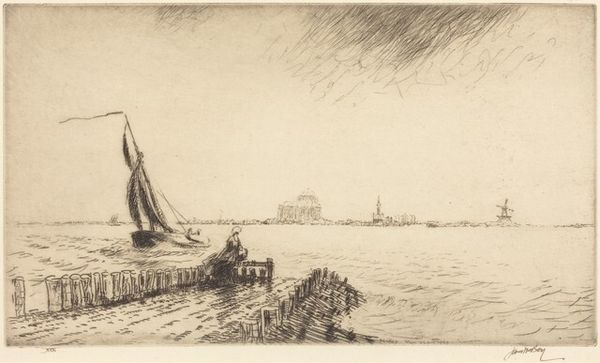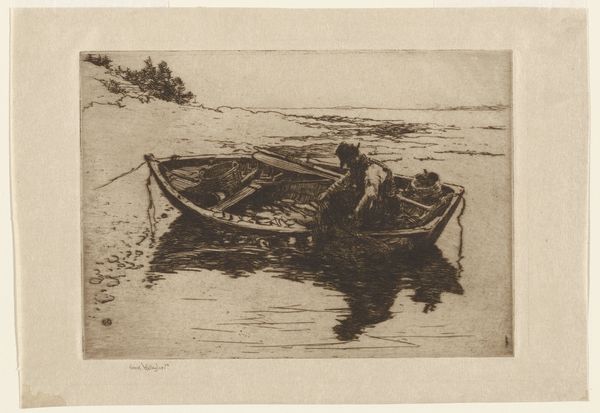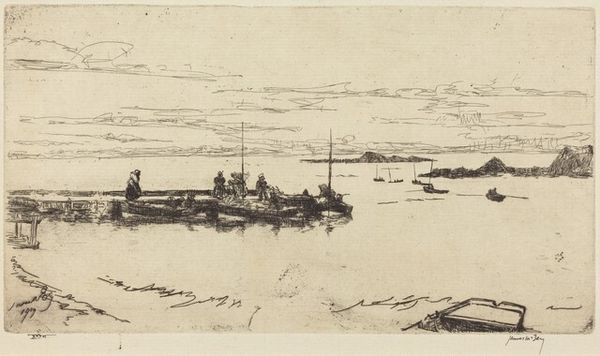
drawing, print, etching, ink
#
drawing
#
venetian-painting
# print
#
pen sketch
#
etching
#
pencil sketch
#
landscape
#
ink
Copyright: National Gallery of Art: CC0 1.0
Curator: This is Sidney Mackenzie Litten's "Gondoliers", a Venetian landscape rendered in ink and etching. It presents several gondolas navigating a calm body of water, likely a canal. Editor: My immediate response is to its shimmering quality. The linework gives a sense of fluidity, the gondolas seeming to almost dissolve into the water. Curator: Note how Litten masterfully utilizes line variation to suggest depth. The foreground gondola exhibits finer, more detailed work compared to those receding into the misty distance. Observe also how light itself shapes our reading of form here, guiding the gaze and softening what would otherwise be harsher edges. Editor: And look closely at those gondolas. Etching is so labor-intensive! Think about the repetitive action, the physical craft involved in creating these almost fleeting impressions. It begs the question of artistic production: who profits from the tourist's fantasy that paintings of Venice produce, versus the artisans who actually worked on the ships represented here? Curator: The composition too invites further inspection. The asymmetrical arrangement, punctuated by those pilings on the left, generates visual intrigue while still maintaining balance. It avoids a static presentation. Semiotically, the pilings themselves seem to gesture beyond themselves, as if representing transition and thresholds. Editor: I think of Venice not just as a place, but as a product shaped by economic forces – trade routes, tourism, luxury. These gondolas, despite their elegance, represent labor. The repetitive motion of gondoliers embodies physical work obscured beneath this picturesque surface. How are such modes of transport reproduced within art for art collectors, too? Curator: I agree that this work does bring such thoughts to mind, but ultimately Litten asks us to think about the aesthetics of a cultural experience in terms of vision: the framing, the play of light and shadow, the textures evoked on paper and surface. The artistic object transcends a singular, historical or cultural reference, in order to have enduring power as a statement of beauty. Editor: Still, recognizing art's constructedness opens paths to seeing its materials, production, and context more clearly. Looking closely has offered up a renewed insight.
Comments
No comments
Be the first to comment and join the conversation on the ultimate creative platform.
